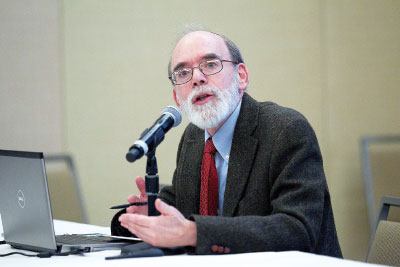Public comments on a proposed diagnosis to be included in DSM—prolonged grief disorder—will be accepted beginning April 6. The diagnosis, if approved, would be added to Section II of DSM-5 in the chapter on depressive disorders. The category of persistent complex bereavement disorder (PCBD), which currently resides in Section III of the diagnostic manual under “Conditions for Further Study,” would be deleted.
The criteria will be posted on the APA website, where interested individuals can also post
their comments. The comment period ends May 20. (See box for the criteria.)
Past APA President Paul Appelbaum, M.D., who is chair of the DSM Steering Committee, said the proposed diagnostic criteria are the result of years of deliberation by grief experts. “Several research groups have been working for a number of decades to study the phenomenon of prolonged grief after the death of a person who was close to the bereaved,” he told Psychiatric News. “Although a separate diagnostic category for prolonged grief had been proposed for previous editions of DSM, the supporting data had never been evaluated as sufficiently strong to warrant its inclusion.”
By the time DSM-5 was being prepared for publication, however, there were enough data to include a category for PCBD in Section III as a “Conditions for Further Study.”
Appelbaum said the research groups involved in this work continued to collect new data and refine their approaches to diagnosis. This led to the submission in 2018 of a new proposal for a diagnosis for prolonged grief, with somewhat different criteria than PCBD in DSM-5.
In June 2019, the steering committee convened a workshop bringing together several research groups to review the criteria. Those groups were led by Katherine Shear, M.D., of Columbia University and Charles Reynolds, M.D., of the University of Pittsburgh; Holly Prigerson, Ph.D., and Paul Maciejewski, Ph.D., of Cornell; and Christopher Layne, Ph.D., and Robert Pynoos, M.D., of the University of California, Los Angeles. An expert panel chaired by David Brent, M.D., of the University of Pittsburgh, reviewed the data and identified areas of disagreement requiring resolution.
“That workshop resulted in tentative agreement on a set of diagnostic criteria that appeared to reflect a consensus based on the data in hand from the research groups,” Appelbaum said. “The criteria were tested on a number of datasets and performed well on measures of validity and reliability and were then finalized and approved for posting for public comment.”
He said the proposed criteria differ from the existing PCBD criteria in the following ways:
The new criteria recognize the possibility of delayed onset of symptoms in contrast to the PCBD criteria, which appear to require that the symptoms begin soon after the death. However, the new criteria require them to have been present to a clinically significant extent nearly every day for at least a month.
Greater emphasis has been given to the presence of intense yearning for the deceased person and preoccupation with thoughts of the person, with less emphasis on emotional pain or preoccupation with the circumstances of the death.
The data strongly suggest that the accuracy of the new diagnosis would be optimized by requiring three of eight additional symptoms, rather than six of the current 12.
Appelbaum added that researchers were attentive to a concern expressed by some that recognizing a diagnostic category of prolonged grief would “pathologize normal grieving.”
“The data from the research groups show that a cluster of symptoms that persist more than a year after death clearly differs from the normal grieving process and is associated with poorer prognosis and greater functional impairment,” he said. “Moreover, the development of treatments specifically targeting prolonged grief—distinct from the treatment of major depressive disorder—suggest substantial clinical utility to recognizing the disorder.” ■
Information about the updates to the
DSM criteria and text for prolonged grief disorder are posted
here.

